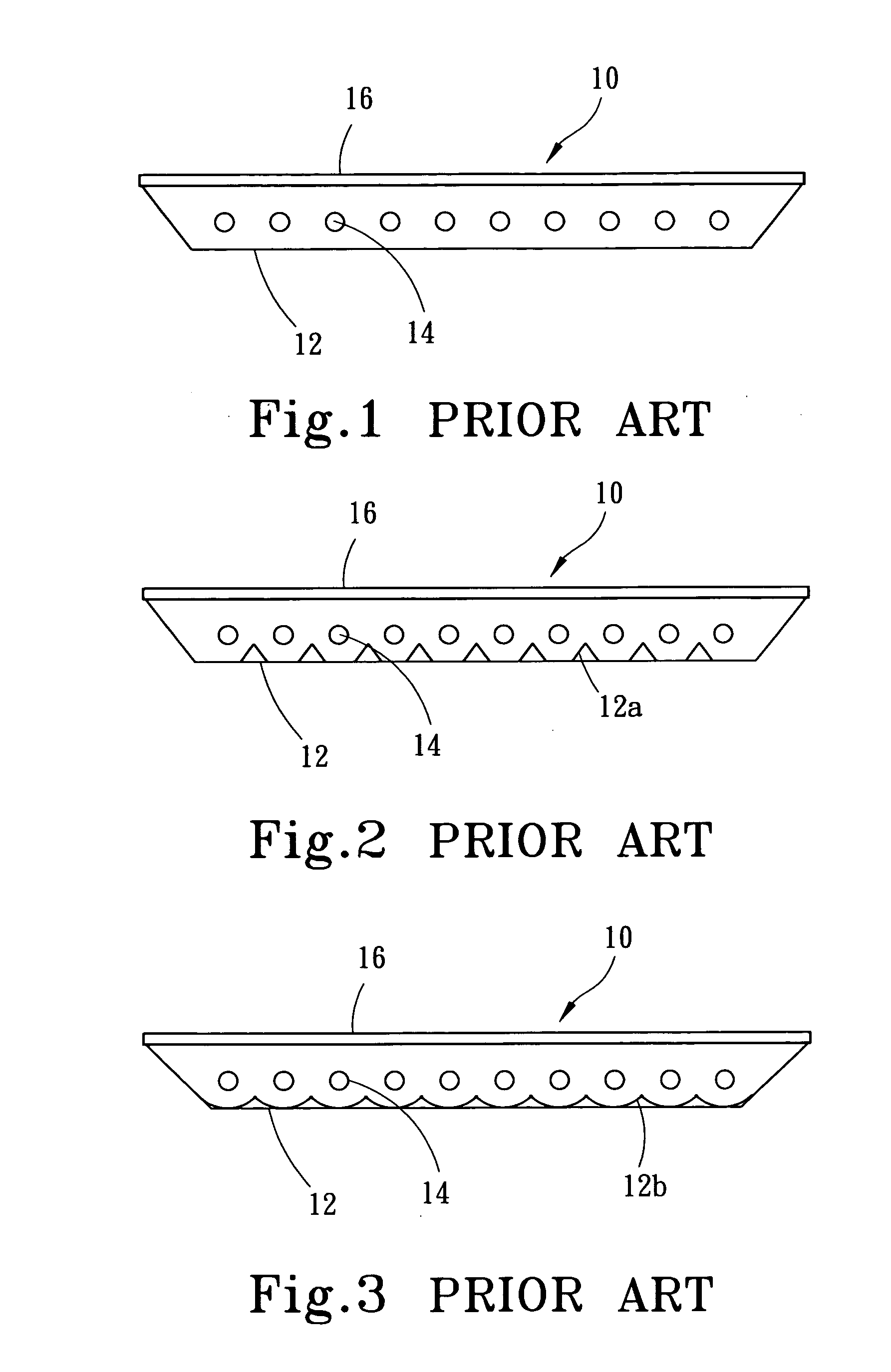Direct type backlight module
a backlight module and direct type technology, applied in lighting and heating apparatus, lighting device details, instruments, etc., can solve the problems of color deterioration, increase the difficulty of compacting the backlight module, etc., to improve the total brightness and uniformity, improve the insufficient brightness occurring
- Summary
- Abstract
- Description
- Claims
- Application Information
AI Technical Summary
Benefits of technology
Problems solved by technology
Method used
Image
Examples
Embodiment Construction
[0025]FIG. 7 shows a structural diagram of the structure of a first preferred embodiment, wherein the direct type backlight module 100 that utilizes a CCFL 120 as a light source. The direct type backlight module 100 of the present invention comprises a reflector 110, a plurality of CCFLs, a diffuser 130 and a plurality of light-compensating elements 140.
[0026] A plurality of CCFLs 120 is disposed inside the reflector 110 and arranged in parallel with each other in an appropriate spacing. The diffuser 130 is placed over the reflector 110 and positioned above the CCFLs 120. The diffuser 130 is an optical plate, which provides the light with a fogging effect, has an incident face 131 fronting the CCFLs and an exit face 132 opposite to the incident face 131, and the light emitted from the exit face 132 of the diffuser 130 has a uniform brightness. The light-compensating elements 140 are disposed at regions corresponding to those positions between any two neighboring CCFLs 120 and inter...
PUM
 Login to View More
Login to View More Abstract
Description
Claims
Application Information
 Login to View More
Login to View More - R&D
- Intellectual Property
- Life Sciences
- Materials
- Tech Scout
- Unparalleled Data Quality
- Higher Quality Content
- 60% Fewer Hallucinations
Browse by: Latest US Patents, China's latest patents, Technical Efficacy Thesaurus, Application Domain, Technology Topic, Popular Technical Reports.
© 2025 PatSnap. All rights reserved.Legal|Privacy policy|Modern Slavery Act Transparency Statement|Sitemap|About US| Contact US: help@patsnap.com



